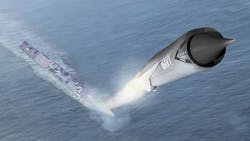Should some smart munitions be classified as unmanned aerial vehicles (UAVs)?
Air-to-air missiles at one time simply were unguided rockets, and had no "smarts" of their own, save being pointed in the right direction when fired. I'm reminded of the U.S. Air Force AIR-2 Genie missile, which was a 1.5 kiloton nuclear weapon propelled by an unguided rocket designed to destroy formations of Soviet-era bombers. Don't laugh; this weapon was in service as late as 1985.
Most missiles and other air-to-air munitions these days, however, are far from unguided. At least most of these missiles have radar-guided or heat-seeking warheads to guide them to their targets. Others, like the Tomahawk cruise missile have autonomous systems and can guide themselves to their targets with relatively little human intervention while in flight.
With this in mind, my question is should smart munitions with even rudimentary levels of system autonomy be classified as unmanned aerial vehicles (UAVs), rather than missiles?
The reason I ask is that smart munitions these days quickly are growing in sophistication. Is a missile that can navigate itself to its target, with the ability to change its flight profile en-route without human intervention just a missile, or is it a UAV? It's hard to argue that new generations of autonomous munitions are blurring the lines between missiles and UAVs.
Lockheed Martin is developing the next-generation Long-Range Anti-Ship Missile known as LRASM. This missile should be able to choose targets, maneuver to avoid countermeasures, and defeat attempts to jam it. It looks like more than a missile to me, but is it a UAV?
If we insist on separating unmanned vehicles and smart munitions, perhaps we should start at the mission. Let's say anything with built-in explosives and designed for a one-way mission isn't a UAV. This would rule out even the most sophisticated smart munitions.
Okay, then how about air-launched decoys and target drones like the Raytheon Miniature Air Launched Decoy Jammers (MALD-J). These are pre-programmed to fly certain flight profiles, and some of them can change profiles in flight, depending on the necessities of the mission. Are these missiles or UAVs?
Or, we could muddy the water further by asking are these missiles, drones, or UAVs? I wish I had a definitive answer, but I don't.
This isn't a puzzle that's likely to go away anytime soon. As technological sophistication increases, these maddening gray areas between smart munitions, drones, and UAVs are likely to get much bigger.
